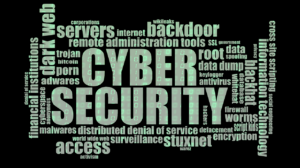In the current digital environment, email continues to be a prevalent channel for various cyber threats such as phishing, spoofing, and impersonation. Companies of all sizes and sectors are increasingly challenged to protect their email infrastructures. To combat these risks, Domain-based Message Authentication, Reporting, and Conformance (DMARC) has become a vital protocol. Nonetheless, merely establishing a DMARC policy is insufficient; its success relies on proper execution and ongoing oversight. This is where online DMARC checker tools become essential.
These instruments, such as a DMARC checker online, analyze domain configurations to detect shortcomings in DMARC records and associated authentication methods. By regularly employing these tools, organizations can protect their domains from misuse and uphold a solid email reputation.
Understanding the Role of DMARC
DMARC, or Domain-based Message Authentication, Reporting, and Conformance, is a protocol designed for email verification that enhances the functionalities of SPF (Sender Policy Framework) and DKIM (DomainKeys Identified Mail). It enables domain administrators to establish rules in DNS that dictate how email servers should treat messages that cannot be authenticated. By implementing DMARC, the risk of unauthorized individuals sending fraudulent emails that appear to originate from your domain is significantly diminished.
Implementing DMARC allows senders to manage the usage of their domain within the broader email landscape. It serves not only as a technical necessity but also as a tool for reputation management, indicating to both recipients and email service providers that your domain is reliable and secure.
Why Checking DMARC Configurations Is Necessary
Establishing DMARC is not a task that can be completed just once. A domain typically has several sources for sending emails — such as newsletters, customer relationship management systems, and support tools — and each needs to be accurately authenticated. As time progresses, these systems may change; a new email service provider could be added, or an existing provider might alter its IP addresses or authentication techniques. If regular audits are not conducted, these modifications could jeopardize compliance, leading to legitimate emails being marked as suspicious or denied.
This highlights the importance of online DMARC checkers. They serve as diagnostic instruments, enabling domain owners to detect misconfigurations, authentication issues, or vulnerabilities that could be exploited by attackers.
Key Features of DMARC Checker Tools
Quick Record Lookup
The primary role of a DMARC checker is to access and present the DMARC record associated with a specific domain. This record specifies the domain’s policy, which can be set to none, quarantine, or reject, and includes reporting addresses and alignment criteria. These components determine the appropriate handling of emails that are not authenticated.
A reliable DMARC validator confirms that the record’s syntax is properly formatted for precise functioning. When formatted correctly, mail servers can accurately understand and apply your policy without mistakes. This verification process is essential for ensuring seamless and secure email authentication.
SPF and DKIM Integration Checks
Since DMARC relies on both SPF and DKIM, an effective DMARC checker evaluates these foundational records as well. It verifies that the SPF record includes all permitted IP addresses and confirms that DKIM is set up with correct selectors. Should either of these records be incomplete or incorrectly configured, DMARC authentication may not succeed.
Quickly identifying email authentication problems is essential for ensuring security. An effective DMARC checker can pinpoint minor misconfigurations that may create vulnerabilities. Timely resolution of these issues helps to avert spoofing and keeps your domain secure.
Policy Effectiveness Analysis
Certain sophisticated DMARC testing tools replicate the behavior of recipient mail servers when they encounter unauthenticated emails originating from your domain. This provides valuable insights into the effectiveness of your DMARC policy in actual situations. If your policy is configured to “none,” the tool might notify you that fraudulent emails could still make it to users’ inboxes.
These simulations evaluate if your existing policy provides adequate security. They also assist in determining the right time to implement more stringent measures. This way, your domain remains proactive against emerging email threats.
Feedback on Vulnerabilities
Sophisticated DMARC solutions provide more than just fundamental assessments; they deliver specific, practical suggestions. For instance, they identify problems such as SPF records that surpass the limit of 10 DNS lookups, which may lead to authentication errors. If a DKIM key is found to be inadequate or too brief, these tools recommend enhancements for improved security.
Customized assistance is essential for enhancing the email authentication within your domain. It effectively targets particular weaknesses, resulting in a more secure and dependable email infrastructure for your organization.
Identifying Vulnerabilities in Email Authentication Settings
Excessive DNS Lookups in SPF:
SPF records can encounter issues when there are too many DNS lookups, which typically arise from using nested includes or overly broad mechanisms. These complications may lead to SPF failures, negatively impacting the reliability of email delivery. DMARC validators can swiftly identify these issues, facilitating their resolution.
Enhancing the SPF record boosts compliance with authentication standards and increases overall effectiveness. This forward-thinking measure facilitates better email delivery and enhances the security of communications for your domain.
Missing or Misaligned DKIM:
DMARC mandates that either SPF or DKIM must correspond with the domain presented in the “From” field. If DKIM is absent or is signed with an alternate domain, the alignment will not succeed. Tools for checking DMARC can identify these discrepancies, simplifying the process of troubleshooting authentication issues.
To resolve these problems, consider signing your emails with your own domain or properly configuring external senders. This will guarantee that messages are validated correctly and enhance the security of your domain. Implementing these measures can help deter spoofing and foster trust in your communications.
Weak DMARC Policies:
When a DMARC policy is configured in monitoring mode, it enables the collection of email reports but does not prevent spoofing attempts. Prolonging this non-enforcement status can heighten the risk to your domain. Numerous online DMARC tools emphasize this risk and suggest transitioning to a more stringent enforcement level once your configuration is adequately set up.
After finalizing your configuration, DMARC tools suggest adopting more stringent policies such as quarantine or reject. This transition improves email security and minimizes the risk of spoofing. It represents an essential advancement in safeguarding your domain against impersonation risks.
Incomplete Reporting Mechanisms:
DMARC provides two kinds of reports: aggregate and forensic, which help you understand the usage of your domain. If you don’t set up reporting addresses (rua and ruf), you will lose access to this essential information. This absence of insight can hinder your ability to quickly address any misuse or configuration errors.
An effective DMARC checker will notify you if there are any missing reporting addresses and suggest that you enable them. Turning on these reports offers continuous insight into how your domain’s email is being utilized. Consistent monitoring aids in identifying problems and enhancing email security.
How DMARC Checkers Assist Continuous Improvement
Web-based DMARC tools not only evaluate your existing configuration but also facilitate a continuous improvement process. Numerous tools feature dashboards that monitor your compliance over time, allowing for easier identification of trends or abrupt shifts. Additionally, they assist in prioritizing issues according to their severity, guiding your team on what needs immediate attention.
Organizations that oversee several domains can benefit from bulk checking capabilities, which facilitate centralized management and guarantee uniform policy implementation throughout their entire collection of domains. Additionally, certain services offer API access, enabling the integration of these checks into automated security processes.
Business Benefits of Regular DMARC Checks
- Improved Deliverability: Emails that are properly verified are more likely to land in inboxes instead of being redirected to spam folders. By resolving any SPF or DKIM issues highlighted by DMARC tools, organizations can significantly enhance their email delivery success.
- Enhanced Brand Trust: A domain safeguarded from spoofing and impersonation builds confidence among clients and collaborators. It conveys a sense of professionalism and dedication to cybersecurity, both of which are essential in the current digital marketplace.
- Reduced Risk of Data Breaches: Fake emails often serve as a frequent gateway for phishing schemes. By protecting your domain and utilizing DMARC verification tools, you can significantly minimize a critical weakness, thereby lowering the chances of confidential information breaches, ransomware attacks, or financial scams.
- Faster Incident Response: If a DMARC checker detects irregularities, like unrecognized senders or alignment problems, you have the opportunity to investigate and take action before any malicious actors can take advantage of the situation. This insight reduces the risk period and facilitates faster resolution.
Selecting the Right DMARC Checker Tool
The reliability and features of DMARC checkers can vary significantly. It is advisable to select tools that provide real-time diagnostics, straightforward reporting, and thorough authentication assessments. Reputable options such as MXToolbox, Dmarcian, EasyDMARC, and PowerDMARC are notable for their effectiveness and ease of use. These resources enhance the efficiency and effectiveness of email security management.
Certain organizations might opt for open-source or self-hosted solutions to ensure privacy, particularly when handling sensitive information in government or financial sectors. In these instances, utilizing tools such as OpenDMARC along with manual DNS checks could be a better fit.





